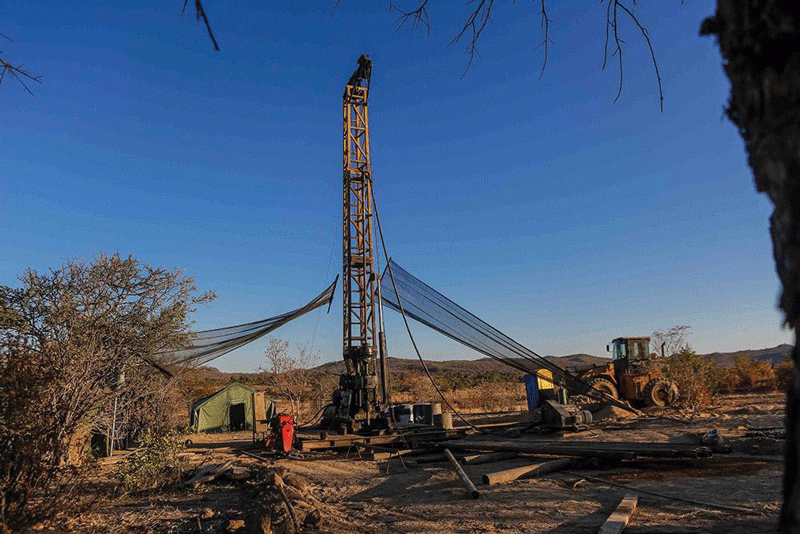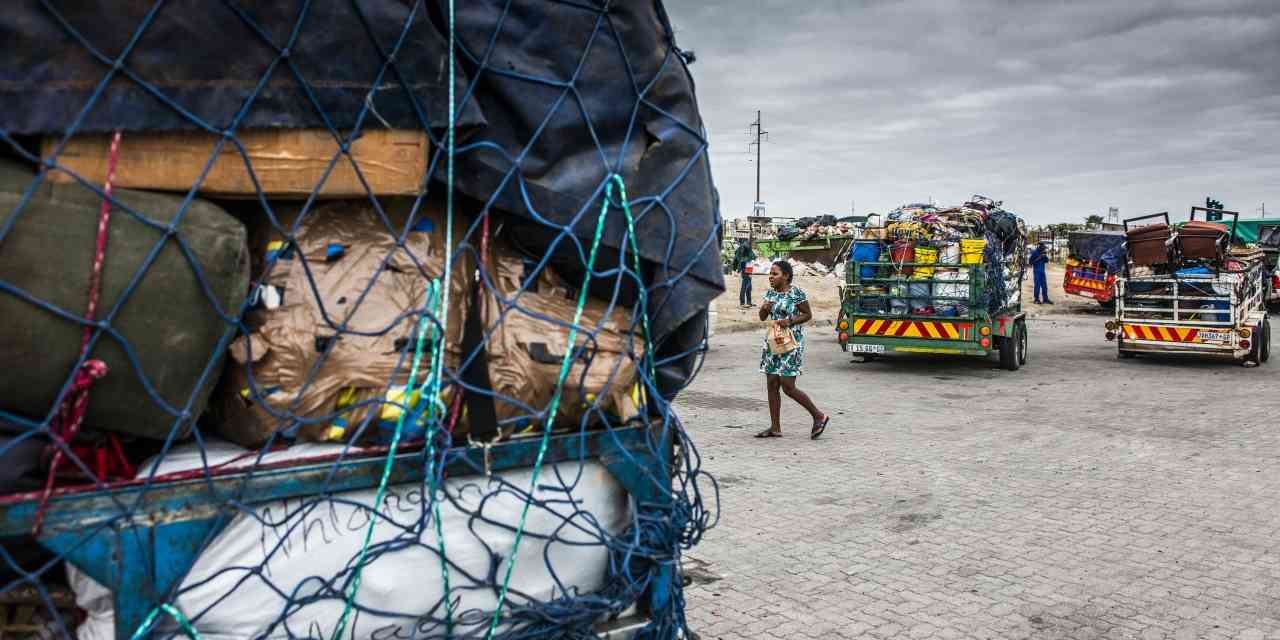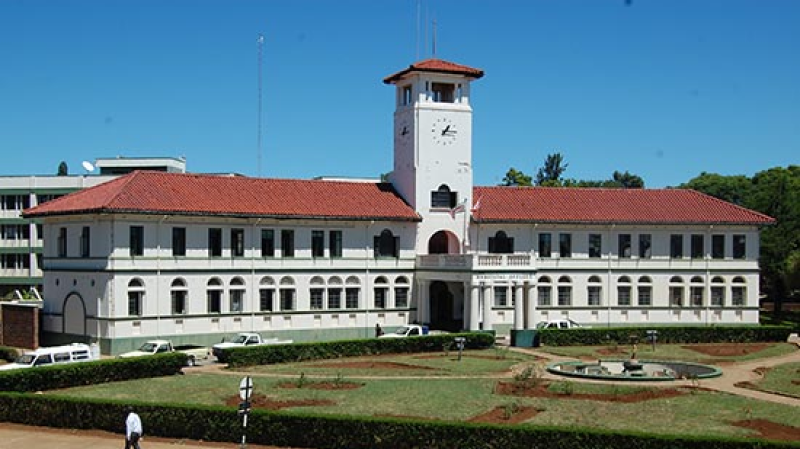
Oscar Nkala travels to Hwange in north-western Zimbabwe to expose the environmental and health hazards caused by more than a century of coal mining
For Amon Chibuswa, the sun setting over Dinde village signifies more than the coming of the Sabbath, a ritual still observed in the small settlement about 40km east of Hwange, Zimbabwe’s “El Dorado” of coal mining and power generation.
Instead, the sunset signifies the end of an era for his people because Dinde is destined to be destroyed to make way for a Chinese-owned coal mine and thermal power station project touted by the Zimbabwean government as a critical boost for its depleted power generation capacity.
In 2020 the government awarded Beifa Investments (Pvt) Limited, a subsidiary of the Jin An Group, licences to set up Beifa Coal Mine and Beifa Power Station in Dinde.
Chibuswa is one of many concerned that the coal mine will kill the village, and that community infrastructure, including church buildings, gardens, schools, clinic, dip-tanks and a hall, will be destroyed.
The coal project entails the eviction of at least 2 000 people, which Chibuswa says is a double slap because in the 1930s the same Nambya and Tonga people in Dinde today were forcibly evicted from Sinamatellata and Bumbusi areas to make way for the Hwange National Park.
“Today, we face the same circumstances that our grandfathers faced 90 years ago. We are being forced to abandon our ancestral lands for a company to make money. We thought the government would protect the poor from the rich. Instead, it uses the police to arrest us for refusing to let Beifa destroy us,” he said.
Chibuswa accused the local traditional leader of turning against the villagers after he was allegedly lavished with gifts that included a vehicle, a mini solar power plant, a borehole and a 2 000 litre-capacity water tank for his homestead. The chief has allegedly threatened to prosecute and banish anyone who resists the project.
“He wants us to accept the Beifa mine because it will bring development and employment opportunities, but we wonder how because we have already seen the pain and poverty caused by coal mines elsewhere in Hwange. We don’t want that here,” Chibuswa told Oxpeckers.
Opaque planning
One major sticking point is that the villagers say they were not consulted about the project. A lack of information about compensation for their land has also undermined confidence between the two parties.
The villagers insist they will only leave after receiving the compensation.
In December 2019 Beifa Investments started a coal exploration programme which allegedly left coal sample holes around the homesteads and violated some gravesites. Stung by global condemnation that followed reports alleging the desecration of graves, Beifa Investments manager Zheng Zhou Qian dismissed the reports as misleading and defamatory.
“Beifa Investments (Pvt) Ltd has not evicted or shown any intention to evict anyone within the Dinde community. Beifa categorically denies ever desecrating any graves in the Dinde community. We note some images posted on the media showing holes drilled near graves (in Dinde). We wish to point out that the company did not sanction the drilling of any holes. As such, if there are any holes on the gravesites, that would be the work of other people unknown to the company,” Qian said.
Underground coal fires
Over a century of coal mining in Hwange has left the town in Matabeleland North sitting atop an intricate network of underground coal mining tunnels and abandoned works which still contain substantial amounts of coal that is not of commercial value. In these tunnels and deep into unexplored areas, underground coal seam fires have been raging unseen for decades.
Of late, these fires regularly burst to the surface as flames, or cause ground collapses forming sinkholes of burning coal which have maimed a number of residents and caused infrastructure damage around the town.
A former mine safety officer at the state-owned Hwange Colliery Company Limited (HCCL) who declined to be named for personal safety reasons told Oxpeckers that most of the fires in Hwange are concentrated in areas previously mined by the company.
Heavy blasting and tunnelling under the town has destabilised the ground and created fissures large enough to allow underground fires or gas explosions to reach the surface as explosions or mini-earthquakes, he said.
“Many suburbs were built on top of burning coal seams. I am afraid there won’t be much of Hwange to save when disaster strikes,” he said.
“You never know you are sitting on one until the ground caves in and drops you into a cauldron of hot ash, hot gases or smouldering coals. The temperature is high enough to reduce bones to ashes in seconds. No one says much about it, but many have lost lives and limbs to coal fires.”
Human settlements
According to a 2021 study commissioned by the Centre for Natural Resources Governance, a research and advocacy civil society organisation, underground coal seam fires are now prevalent in the mining concession owned by HCCL where there are human settlements for mine workers.
“Residents have noted that mine residue dumps found in the Number 2 and 3 areas of the HCCL [concession] are some of the most hazardous sites with raging underground coal seam fires. It was noted that loose dry materials that land on hot coal dumps quickly ignite fires that spread to coal seams. Fires travel underground from one coal seam to another and subsist in the ground for many years. Removal of overburden during mining brings the fires close to the ground,” states the report, titled Effects of coal seam fires and other environmental hazards in Hwange.
It points out that in some cases the overburden gives in to the heat, causing the ground to collapse.
“Studies have shown that the survivors of burn injuries often suffer from chronic pain and serious problems, pruritus and loss of strength,” it states.
“Psychosocially, a certain proportion may develop depression and post-traumatic stress disorder after being discharged from hospital and this can go on for several years after the incident.”
In response to the results of independent research showing the impacts of its underground coal fires on public health, HCCL managing director Charles Zinyemba issued a statement saying he was “very much alive” to the underground coal seam fires on its concessions.
“As a precautionary measure, public education campaigns [on underground coal seam fires] were, and will continue to be held in the schools and villages [around Hwange],” he said.
“Tribal elders were engaged to disseminate this information to the villagers, and communities living in close proximity to affected areas will continue to be informed of temporary measures to avoid risks, such road diversions and placement of signages in affected areas. In addition, HCCL has invested in a drone that has a camera for security and the identification of underground fires,” Zinyemba said.
A dead river
Elsewhere in Hwange, the fears of the Dinde villagers are already being felt in communities living along the Deka River, which runs through the mining town. The river transports toxic mineral effluent from at least seven coal miners and thermal power producers.
Villagers who spoke to Oxpeckers said due to fears of poisoning, communities do not drink water from the river anymore but are surviving on boreholes drilled by a local non-governmental organisation.
“The waters of the Deka changed colour to green about 20 years ago, and it has remained like that because of pollution,” said a local headman, Cassius Sinampande.
“We Tongas call ourselves ‘the people of the river’ because fishing is our tradition. But we don’t fish anymore because toxic mine pollutants killed the fish. The water kills people. It kills livestock. Anything watered from the Deka dies.”
In Hwange town, residents are grappling with continuous noise and air pollution, environmental degradation and water contamination by effluents from the coal mines and power stations. The Hwange Local Board also complains of widespread local road network destruction by heavy trucks that deliver coal and supplies to and from the mines. The residents said heavy blasting by coal mines was damaging their houses, with most suffering cracks each time blasting happens.
Acid mine drainage
A study published by Frontiers For Environmental Science in December 2021 found acid mine drainage and other pollutants in the Deka River were causing serious environmental problems and had potentially disastrous public health consequences.
“Based on the data of the community-based monitoring, we showed that coal mining and combustion are degrading the water quality of the Deka River. The main effluent channel Sikabala that joins Deka River carries along a variety of metals that relate to those found in very high concentrations at the point sources of acid mine drainage (AMD),” the report states.
“These AMD sources are mining legacies from former underground mines. Our findings show that AMD formation is mainly responsible for critical loads of Mn2+ [manganese] and other bivalent transition metals in the river downstream of the inlet of the main effluent channel Sikabala.”
The study also recorded cases of illegal pumping of pit water by miners, which violates environmental emission standards. They concluded that the acidic pit lakes in the Hwange area will present high risks for the Deka’s ecosystem as long as mines continue to neglect the environmental impacts of their actions.
“Pollutants are most probably also entering the river system via the atmosphere, as high arsenic concentrations during the rainy season suggest. A potential source of these emissions is the thermal power plants,” it states.
Since the Deka River is a source of drinking water, pollutants such as manganese and to a lesser degree nickel and arsenic are of concern for human health, the researchers concluded.
“These elements regularly exceed drinking water standards, with manganese being the most drastic case, surpassing standards around 70 fold”.
The researchers recommended the Zimbabwe government should commission a public health study across the Hwange District to determine potential public health effects of high manganese exposure.
* Oscar Nkala is a Zimbabwe-based Oxpeckers Associate who works on transnational investigations across borders in sub-Saharan Africa. This investigation is part of the Oxpeckers investigative series titled ‘The human cost of energy in Africa’.









